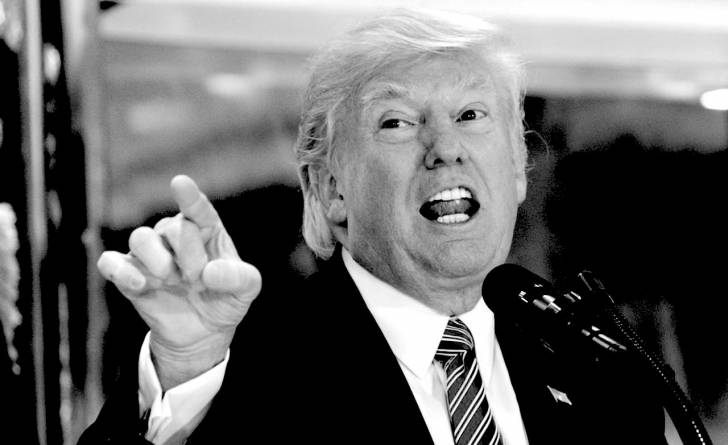by Joseph V. Amato, President and Chief Investment Officer—Equities, Neuberger Berman
After a year of tumultuous elections, investors can now refocus on company fundamentals—and the outlook is more nuanced than it might seem.
After a seemingly endless and exhaustive process to determine the next president of the United States, we can all now get back to business and focus once again on markets and the economy. The substantial retreat in implied market volatility since the U.S. election suggests that investors are, in fact, ready to do just that.
As Jeff Blazek, Erik Knutzen and Shannon Saccocia have argued in recent Perspectives, animal spirits may steer the markets for the next few weeks, but the details are likely to become increasingly important.
Elections Matter, Earnings Matter More
While we and many others have spent countless hours analyzing policy implications that could result from this election, it’s important to remember that earnings drive equity markets more than any other factor.
While Nvidia is among companies still to report, we are nearing the end of third-quarter earnings season, and it has been reasonably upbeat. The other familiar mega-cap names have comfortably beaten analysts’ growth expectations. Importantly, we are also seeing broader performance, a theme in our views this year that we believe will strengthen in 2025.
Third-quarter earnings growth is sustaining the recovery from the rate-hiking cycle that began in March 2022. More industries in the S&P 500 Index grew their earnings over the preceding 12 months than in 3Q 2023. The headline growth number is still being stretched upward by mega-cap tech and dragged down by cyclical companies, especially in the energy sector. However, the growth of the median stock has closed in on the growth of the capitalization-weighted index over the course of the year. We expect that gap to close further next year, as cyclicals make a comeback and mega-cap tech growth normalizes.
Markets Like Clarity
The nature of some of Donald Trump’s policy proposals means that announcements of key appointments could still move markets, but the clarity of the result, with confirmation of Republican control of Congress coming last week, has given investors some certainty. Nonetheless, third-quarter earnings are a reminder that the election result is not the only reason the S&P 500 Index crossed the 6,000 threshold last week.
While a lot of attention has focused on the inflationary and deficit-raising potential of Trump’s immigration, trade and tax ideas, in particular, we tend to think those concerns are overstated. As Ashok Bhatia has written, we believe disinflation and a path to a 4% policy rate is being baked into investors’ expectations, allowing the focus to shift from inflation and central banks to the fiscal and growth backdrop.
For equity investors, this will mean assessing policy implications region by region, sector by sector, stock by stock. We think we will start to see that sometime early in the new year—and our equity research team sees a lot of nuance and complexity to deal with.
Industry Sector Outlooks Are Mixed
Take energy and power, for example. The headlines might suggest that the election result is good news for fossil fuel companies and bad news for renewables and the Inflation Reduction Act (IRA). But the IRA is creating thousands of jobs, primarily in Republican-controlled states, and renewables remain the quickest and cheapest market solution to the U.S.’s power scarcity. The liquid natural gas sector looks set to benefit from the removal of the permit pause, and oil field services could benefit from more extraction activity, but oil and gas investors remain focused on capital discipline and wouldn’t wish to see rising supply pushing down prices.
Similar nuances can be seen across other sectors.
We see good reason for the general outperformance of industrials, which often greets Republican victories in anticipation of pro-cyclical, pro-infrastructure policies, but again, that suggests investors see little prospect of a broad repeal of IRA measures. Adjacent sectors like transport, aerospace and defense, or machinery and autos, face potentially strong crosscurrents.
High tariffs could support domestic transport sectors such as railways and trucking while hurting cross-border operators. Tariffs would also raise the cost of inputs for auto and aerospace manufacturers. Whether lower energy prices, looser regulations and other pro-growth measures outweigh these pressures will often depend on company specifics.
Stronger demand for industrial machinery would feed through to the semiconductor sector, but it remains unclear how Trump’s “America First” approach might affect existing CHIPS and Science Act funding. A retreat from the previous administration’s antitrust regulation is likely to benefit the tech sector in general, but high exposure to China poses a risk for many companies. Tariffs and China exposure are likely to become increasingly important factors in retail and ecommerce, as well.
In health care, we see a potential split between the many health care services businesses that could benefit from a friendlier tax, regulatory and M&A environment, and the large-cap therapeutics companies that face uncertainty on drug-pricing policy.
Financials is perhaps the only sector where this election result seems entirely supportive. A steeper yield curve, lower taxes, a more energized dealmaking environment and looser regulation (including the potential dilution of Basel III measures) would all be positive for the sector.
Zero-Sum Game?
Overall, we are optimistic on nominal growth as we see inflation and rates trending down against a generally pro-business policy background. However, we think it is important for investors to acknowledge that we have moved from an era of globalization, in which free trade enhances growth worldwide, to a new era of mercantilism and protectionism.
That could mean a zero-sum game with more distinct winners and losers—regionally, sectorally and company by company. We expect to see many of the subsector and bottom-up nuances play out as President-elect Trump assembles his government and settles on policies; and when that happens, we believe an active approach to managing risk and opportunity will be paramount.
Investors are getting back to business after a tumultuous year of elections. But that business looks to be very different from what we’ve known for the past four years.
*****
In Case You Missed It
- U.S. Consumer Price Index: +2.6% year-over-year, +0.2% month-over-month (Core Consumer Price Index +3.3% year-over year, +0.3% month-over-month) in October
- Eurozone 3Q GDP (Second Preliminary): +0.4% quarter-over-quarter
- U.S. Producer Price Index: +2.4% year-over-year, +0.2% month-over-month in October
- Japan 3Q GDP (Preliminary): +0.9% quarter-over-quarter (annualized, seasonally adjusted)
- U.S. Retail Sales: +0.4% month-over-month in October
What to Watch For
-
- Tuesday, November 19:
- U.S. Building Permits
- U.S. Housing Starts
- Thursday, November 21:
- Eurozone Consumer Confidence Indicator (Flash)
- U.S. Existing Home Sales
- Japan Consumer Price Index
- Japan Manufacturing Purchasing Managers’ Index (Preliminary)
- Friday, November 22:
- Eurozone Manufacturing Purchasing Managers’ Index (Preliminary)
- Tuesday, November 19:
Investment Strategy Team
Copyright © Neuberger Berman















